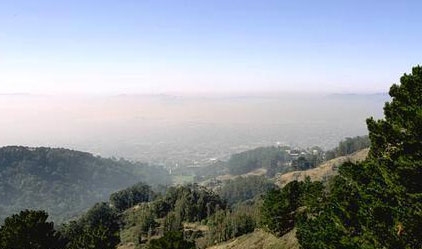Help prevent air pollution by limiting pesticide use
It’s that time of year when hot weather fuels the creation of ozone, or smog. Some pesticides emit volatile organic compounds (VOCs) that contribute to ozone formation. Using pesticides that release VOCs may be restricted in certain California locations between May 1 and October 31.
If you plan to apply a pesticide, use the Department of Pesticide Regulation’s VOC calculators to determine emissions from fumigant and nonfumigant pesticides. Get there by clicking the Air Quality button at the top of each treatment table in the UC IPM Pest Management Guidelines.
Simple steps can minimize the release of VOCs into the air:
- Use pesticides only when necessary
- Decrease the amount of pesticide applied if appropriate
- Choose low-emission management methods
- Avoid emulsifiable concentrate (EC) formulations and fumigants
Ozone, or smog, is caused by mixing VOCs, nitrogen oxide and sunshine. High levels of ozone can harm people and crops. Regions in California that do not meet federal or state air quality standards for ozone, called nonattainment areas, may restrict the use of pesticides that release VOCs.



Posted by Kim on May 5, 2014 at 9:29 AM